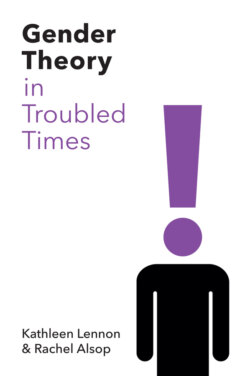Читать книгу Gender Theory in Troubled Times - Rachel Alsop - Страница 25
Trans bodies and biology
ОглавлениеThe link between biology and sexed identity has been rendered even more complex with the increased visibility of trans bodies – that is, bodies initially assigned to the categories male or female that come to resist that position by invoking the other side of the binary or claiming a position as non-binary. Although trans people sometimes articulate their subjectivity in terms of having a male brain in a female body, or vice versa, there is little biological evidence to support such a claim, particularly in the light of neurobiological research rejecting a division into male and female brains. Nor, thus far, is there any indication of there being biological markers which signal transitioning choices. But this does not make biology irrelevant. In ways which we will explore more fully in chapter 7, the body is of pivotal importance to trans identity. Its visible morphology and characteristics, such as breasts, facial hair and muscular structure, are used as markers of sexed identity, which enable interpersonal recognition within social space. Consequently, many trans people modify their bodies through surgery and the taking of hormones. Testosterone, for example, whose determining power we have been resisting thus far in this chapter, is a widespread aid to trans people who are seeking a more masculine appearance in order to enable recognition, by others and themselves, of their sexed identity. The consequence is to make even more complex the relation between biology and sexed identity. For there are men with many of the biological features of many other men, in terms for example of bodily morphology, hormone levels, facial hair and musculature, who nonetheless have retained ovaries, have wombs and give birth. This undermines Alcoff’s suggestion (see above) that we can anchor sexed identity in possible roles in reproduction.
